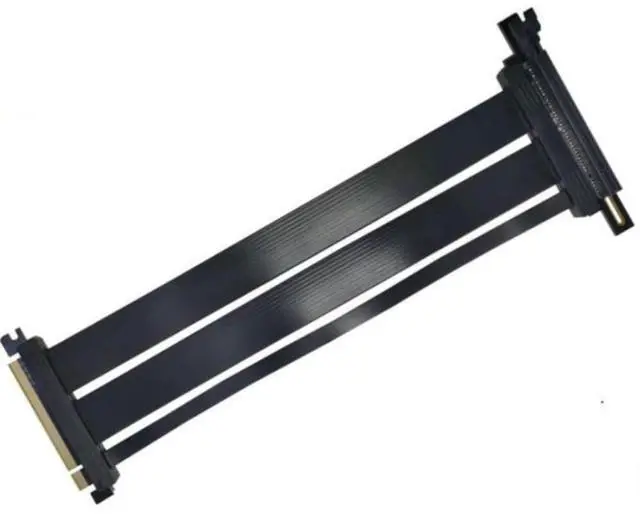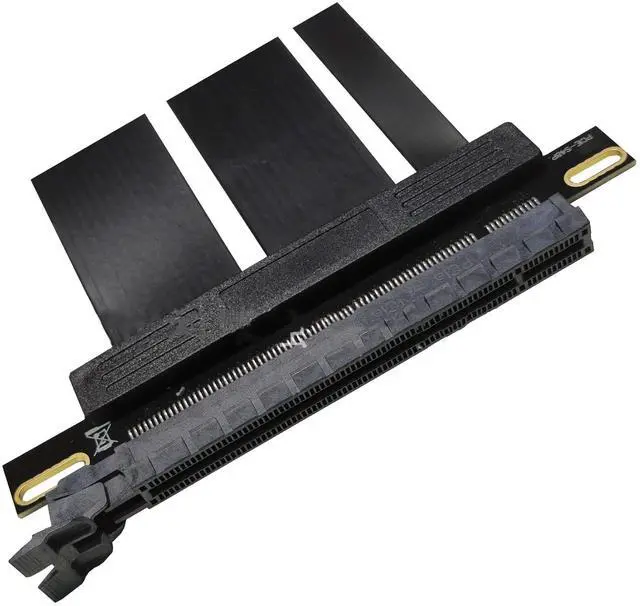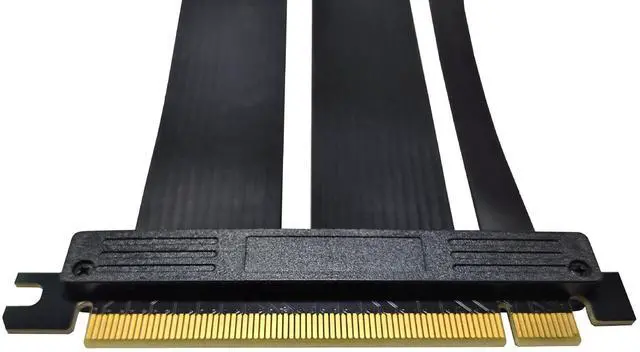Easy troubleshooting steps to resolve issues: Step
1: Update BIOS on both Motherboard and GPU Update to the newest firmware / BIOS/software for the motherboard and GPU. The newest update can be obtained from the manufacturer's website.
Step 2: Set BIOS to optimal default Overclocking is the main reason for the system to become unstable in Gen 4 setting. Reset BIOS to optimal default may resolve the issue and allow the system to run under Gen 4 without issue.
Step 3: Try to boot without the riser cable Make sure the system can boot properly without the riser cable.
Step 4: Clean the connector contacts on the riser cable and GPU Cleaning the connector contact (Gold Fingers) on both GPU and riser cable with rubbing alcohol to remove possible particle build-up.
Step 5: Ensure the cable is fully and securely inserted into the socket Please make sure the male connector (Gold Fingers) is fully inserted into the motherboards PCIe socket. Our riser has a very short pin designed to provide better insertion loss. The pins may not be in full contact with the PCIe socket pins resulting in signal lanes dropping from x16 to x8, or worse at x4 speed. Make sure you choose the right length of cables. Too long or too short may result in performance loss.
Step 6: Try a different PCI-e slot (Always choose the PCIe slot closest to the CPU) If the motherboard has multiple Gen 4 PCIe slots, try to install the cable on a different slot.
Step 7: I have done all of the above and Im still having trouble with the riser cable PCI-E specifications do not regulate the use of a riser cable. As a result, Gen 4 motherboards are designed to connect the GPU directly. Hence leave limited headroom for the use of a riser cable, and the use of a riser cable may fail when the insertion loss is over the limits due to poor components used in motherboards. Not all motherboards and GPUs are manufactured to the same quality, some have higher headroom than others.


